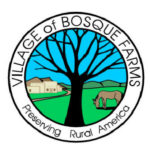Question: Half of my ash tree looks ok, but the other half looks completely dead. What could be the problem? Is it going to get worse or better? — Mike N., Placitas
Answer: (Throughout this column I’ve added * to indicate that a given topic is linked to more information in the online blog version available at nmsudesertblooms.blogspot.com.)
Ash trees are worrying homeowners all over the state. Bernalillo, Sandoval and San Juan County extension agents Sara Moran, Lynda Garvin and Bonnie Hopkins, respectively, reported they’ve been getting more and more calls about ailing ashes in those areas in the past few years.
Jimmy Zabriskie, community forester with the city of Las Cruces Parks & Recreation department, says he has noticed stressed ash trees on both public and private property, some with evidence of borer damage. In severe cases, trees will be removed in the coming weeks and Zabriskie plans to look closely at these tree roots in hopes of understanding the underlying causes for their recent decline.

Marisa Thompson
A friend in Truth or Consequences texted me photos of her three ash trees — two of which are only a few years old — have lost half of their canopy from the top down and have trunks that are riddled with borer holes the size of BBs which we determined to be caused by the ash twig borer. The third tree is 30-feet tall and is rocking it without any outward signs of stress.
Another report came from the west side of Albuquerque where a tree owner is alarmed because part of the canopy has tightly curled, contorted leaves, and on a few branches the leaves are barely recognizable wisps. And yet another ash in Belen leafed out very late this year, and now half its canopy has leafed out and is looking beautiful and healthy, but about a quarter of the canopy has died back to the larger branches, and on the final quarter there are sea anemone-looking stunted growth clusters spurting out where the new season’s branches and leaves should be. Dr. Carol Sutherland, NMSU Extension Entomology Specialist, lamented, “Unfortunately, ash trees are a virtual magnet for insect pests.” Sutherland adds, “The world is ‘smaller now.’ We have pests (like ash whitefly) that weren’t here 30 years ago. Expect more exotic pests to arrive and for pest distributions to shift in the coming years.” Among the possible culprits are whiteflies, ash twig beetle, ash/lilac borer, emerald ash borer (not yet*), and aphids*.
Ash trees are a popular pick for yards and parks for several reasons. They’re fast growers that can produce a nice, rich shade in under a decade if (and it’s a big if) they’re planted correctly, well cared for, and left alone by pests. All ash trees are in the Oleaceae (olive and lilac) family, and species commonly planted in New Mexico include the Arizona or velvet ash and associated cultivars (like the popular Modesto ash), green and white ash, Raywood ash, fragrant ash, and others.
Jennifer Dann, Urban and Community Forestry Program Manager for NM State Forestry, points out that, in addition to their bright green leaves, the seeds and fruit aren’t overwhelming from an upkeep perspective; they’re native to the United States; the Arizona ash is even native to New Mexico; they aren’t invasive or poisonous; and they don’t try to stab you.
Last year, with US Forest Service Funding, Dann and collaborators inventoried 200 tree species in established public spaces in each of our 33 counties. Fraxinus, the genus for all ash species, was in the top five most common tree genera (plural of genus) statewide. Can you guess which other genera made it into the top five? Think about the oldest park in your vicinity. Now visualize the oldest trees in that park and you’re likely thinking of one or more of them: mulberries (Morus spp.), pines (Pinus spp.), cottonwoods (Populus spp.), and elms (Ulmus spp.). The results from the statewide urban tree inventory are available to the public in the form of a story map. Visit https://tinyurl.com/urbantreesnm to access all the details.
We have a tree problem in our public parks—actually several problems. Old age is a serious issue. No tree lives forever*, but many of our ashes are dying way too young. Another issue is that too few of the most common tree species are native to our region. And all five of those top five tree genera consist of wind-pollinated species*, so they’re not as supportive of pollinating, beneficial insects as they could be. Having too many of only a few species means the parks have low species diversity*, which can lend itself to all sorts of negative effects. For example, when the emerald ash borer gets to New Mexico*, or another insect pest population climbs sharply as a result of warming temperatures, huge numbers of ash trees will be vulnerable. This dreaded emerald ash borer has already killed hundreds of millions of ash trees in North America since its introduction from Asia in 2002 and is expected to kill billions more in the coming decade (yes, billions). As of October 2018 it’s now found in 35 states and as close as Denver, Colorado.
The solution to our aging park tree conundrum isn’t as simple as planting lots more trees, although that is one of the steps. Selecting a diverse mix of recommended species* is another crucial step. “Right tree right place” is the slogan and mantra for arborists worldwide for good reason. Add in proper planting*, adequate irrigation*, and strategic (and ideally minimal) pruning* and we’ll be well on our way to sustainably increasing our urban canopy cover.
OK, back to the original question… is your ash tree failing? Here are some things to double and triple check to help with diagnosis*: Is the entire root area* and not just the trunk being irrigated in a way that allows water to seep down over a foot deep? Are you watering too frequently*? Is the tree planted too deep*? Are circling roots* cutting off water and nutrient circulation underground? Sun scald*? Or, like the little ash trees in Truth or Consequences, does yours have evidence that ash twig beetles caused branch dieback?
Sara Moran reported that of the ash leaf samples she’s sent down to the NMSU Plant Diagnostic Clinic to test for pests and diseases, no disease has been associated with the “half ‘n half” symptoms of canopy dieback. However, insect damage was confirmed from the ash twig beetle and ash flower gall mites (which cause a sort of popcorning of flower material, but don’t harm the tree at all) was found. In addition, Moran says, “Most of the time insects tend to be a secondary issue. Correcting cultural practices (like watering properly) helps tremendously in minimizing and avoiding pest attack. Proper planting is crucial for avoiding circling roots and the associated stress that can cause.” Moran’s recommendations: “DO NOT panic and DO your research. Finding an answer might take some time but, in the long term, you could end up having a better treatment approach for your tree. The moral for my ‘Ash Tree Journey’ as an Extension Agent is: gather information, collect samples, and ask for a second opinion. Plus, look for other options when selecting trees.”
Jennifer Dann suggests if branches are really dead, and not just leafing out really late, talk with a professional about whether pruning the dead out of the tree is a viable option for leaving a structurally sound tree in place, or whether the tree needs to be removed and replaced with something else.
Dr. Sutherland again, “Our best technology (applied in human health situations) is not adaptable (at least yet) to plant problems. We cannot see the roots, so we don’t know how large or widespread or numerous they are. Are they healthy or do some have problems of various sorts? We cannot look under the bark or into the woody interior—or take a ‘sap pressure’ like our doctors take a blood pressure reading. We can’t stick a thermometer anywhere into a tree to see what’s happening.” By the time we notice that our trees are ailing, it’s likely that a lethal amount of damage may have already been done. We need to plant smarter and pay closer attention to the details from leaf symptoms to watering methods.
Here’s what NOT to do: Spray an insecticide without knowing exactly what the pest is or understanding its lifecycle. If it’s a secondary issue, the primary issue (again, likely a water issue) should be addressed first. And hold off on applying fertilizer. As retired NMSU Extension Horticulture Specialist Dr. Curtis Smith says, “Think of fertilizer like you think of ice cream. When you’re feeling healthy and strong, ice cream can be a nice treat. But if you’re not feeling great, health-wise, it’s probably not the best choice.”
(Send gardening questions to Southwest Yard and Garden — Attn: Dr. Marisa Thompson at [email protected], or at the Desert Blooms Facebook page (@NMDesertBlooms) Please copy your county extension agent and indicate your county of residence when you submit your question. For more gardening information, visit the NMSU Extension Horticulture page at Desert Blooms.)
















